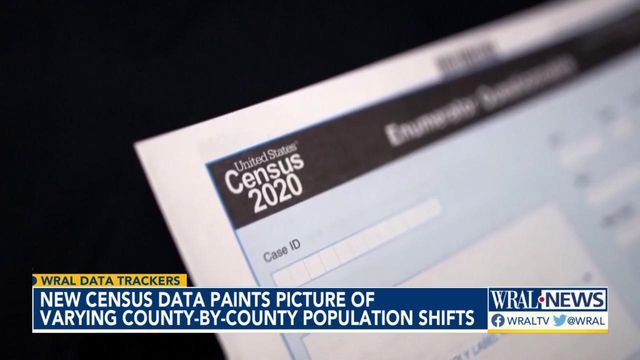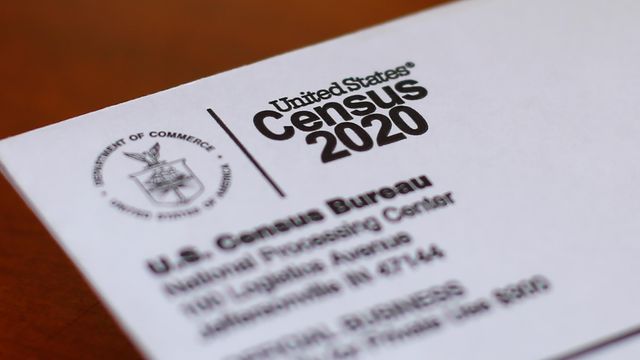Redrawing NC's election maps: Census data shows increasingly more diverse population
On Thursday the Census Bureau released data integral to the state's redistricting plan. The state population is increasingly more diverse.
Posted — UpdatedOn Thursday the Census Bureau released data integral to the state’s redistricting plan. The information came from the 2020 Census - the official population count used to decide congressional seats.
North Carolina’s population increased 9.5% in the last decade and now has more than 10.4 million residents. It’s the 15th fastest growing state in the nation. Due to the growth in population, North Carolina is gaining a 14th seat in the House of Representatives.
"With North Carolina, our headline is that we’ve seen for the past couple of censuses continued strong growth," said Bob Coats, North Carolina's census liaison.
Wake County now surpasses 1.1 million residents, a 25.4% increase since the 2010 count.
Census data shows how municipalities' populations changed over the past decade.
Beside each city or town name below is its current population count from the 2020 census, and the percent growth it experienced over the past 10 years.
- Apex: 58,780 (56.8%)
- Cary: 174,721 (29.2%)
- Fuquay-Varina: 34,152 (90.4%)
- Garner: 31,159 (21%)
- Holly Springs: 41,239 (67.2%)
- Knightdale: 19,435 (70.5%)
- Morrisville: 29,630 (59.5%)
- Raleigh: 467,665 (15.8%)
- Rolesville: 9,475 (150.3%)
- Wake Forest: 47,601 (58.1%)
- Wendell: 9,793 (67.5%)
- Zebulon: 6,903 (55.7%)
The latest information means Wake is now the most populous in the state as Mecklenburg drops to second. The county surrounding Charlotte grew by more than 195,000 residents but it was at a smaller rate than in Wake.
Both Wake and Mecklenburg have populations double the size of the third-largest county, Guilford.
"North Carolina's becoming a much more urban area," said Mike Cline, the North Carolina state demographer. "I know we like to see ourselves as a rural population and we are a rural state relative to other states, but we're becoming much more urban, much like many other states in the nation as a whole."
The move to urban and suburban areas was noticeable in the newly released data, as well. It shows Johnston County saw the largest population increase since 2010 - jumping to 215,999 people which is up 27.9%. On the opposite end, more than 2200, or more than a quarter of Tyrrell County residents left the area.
"The extent of the population loss was a little more pronounced than we expected it to be," said Rebecca Tippett, the director of Carolina Demography.
In total, 51 counties saw their populations decline, more than Tippett anticipated. Carolina Demography had estimated 43 counties losing residents.
The state population is increasingly more diverse. The census data shows there's more than a 57 percent chance that two North Carolinians chosen at random will be from difference race or ethnicity groups. This is what the bureau refers to as the diversity index.
While North Carolina remains primarily white (60.5%), the Hispanic population increased from 8.4% to 10.7% of the entire state population. The Black population in declined slightly to 20.2%. Meanwhile, 8.6% of North Carolina residents now identify as other races including Asian or American Indian or two or more races, alone, up from 5.2%.
Tippett said North Carolina has seen an increase in people immigrating to the area from Asia and Hispanic birth rates are higher than other demographics. In addition, the way the polling approached demographic questions changed from 2010.
"No two censuses are the same," she explained.
In the 2020 census, people could provide more detailed information about their backgrounds "to better better reflect how people are talking about race and ethnicity," Tippett told WRAL. She wasn't surprised to see a growth in how people are identifying.
Bertie, Edgecombe, Halifax, Hertford, Northampton Robeson, Vance, Warren and Washington are the only counties that have a minority-majority, the 2020 data shows.
Nationwide, people who identify as White, alone, make up 57.8% of the population, decreasing from 63.7% ten years ago. Now, nearly one out of every five people in America identify as Hispanic/Latinx. The population makes up the second largest racial/ethnicity group in the country.
"If we keep our mindset on the population from 20 or 30 years ago, we look at lot different than we did then and it think it’s a matter of understanding what our population looks like," said Cline.
The country's population slowed its growth, increasing 7.4% in ten years, the lowest since the 1930s.
Coats, the governor’s Census Liaison here in North Carolina, said the data will also help leaders decide where infrastructure improvements are needed. For example: It will show which areas have more children under 18 and how school districts should be preparing.
Redistricting data was originally expected to be released in early April 2021, but there were delays due to COVID-19. Postponing releasing the data has resulted in postponements of some North Carolina municipal elections, normally held in odd years, because many cities need to redraw city council districts.
The redistricting criteria, to be approved this morning, lay out the framework for how lawmakers can draw the new lines and where those lines can fall. Among the proposed rules: No consideration of partisan data or past election results in the draw, and no consideration of race. Past maps drawn by the state's Republican majority have repeatedly been thrown out by the courts either as racial gerrymanders or overly partisan ones.
More granular, in-depth data, including household demographic information, will be released toward the end of the year, or possibly in early 2022.
Related Topics
• Credits
Copyright 2024 by Capitol Broadcasting Company. All rights reserved. This material may not be published, broadcast, rewritten or redistributed.






